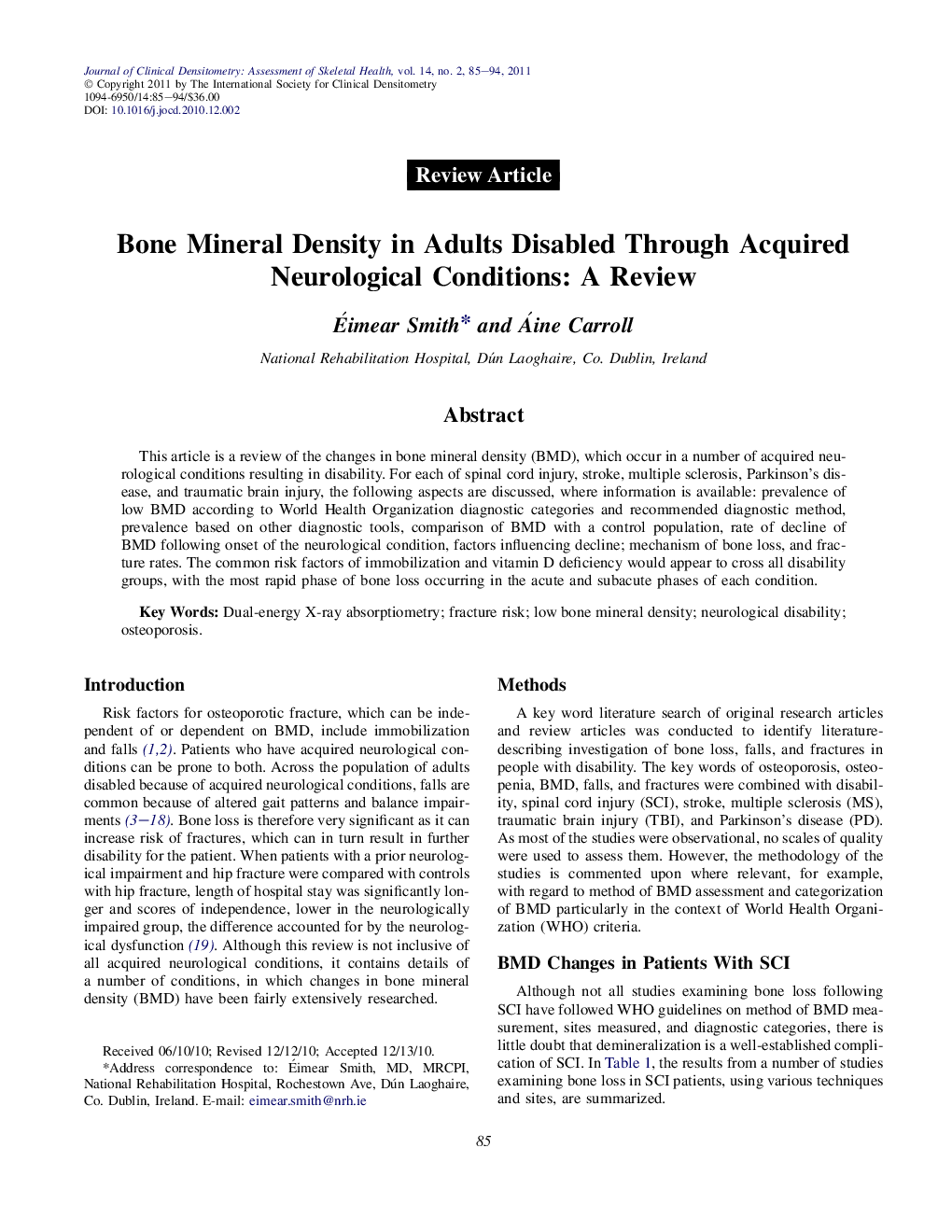| Article ID | Journal | Published Year | Pages | File Type |
|---|---|---|---|---|
| 3271473 | Journal of Clinical Densitometry | 2011 | 10 Pages |
Abstract
This article is a review of the changes in bone mineral density (BMD), which occur in a number of acquired neurological conditions resulting in disability. For each of spinal cord injury, stroke, multiple sclerosis, Parkinson's disease, and traumatic brain injury, the following aspects are discussed, where information is available: prevalence of low BMD according to World Health Organization diagnostic categories and recommended diagnostic method, prevalence based on other diagnostic tools, comparison of BMD with a control population, rate of decline of BMD following onset of the neurological condition, factors influencing decline; mechanism of bone loss, and fracture rates. The common risk factors of immobilization and vitamin D deficiency would appear to cross all disability groups, with the most rapid phase of bone loss occurring in the acute and subacute phases of each condition.
Keywords
Related Topics
Health Sciences
Medicine and Dentistry
Endocrinology, Diabetes and Metabolism
Authors
Ãimear Smith, Áine Carroll,
